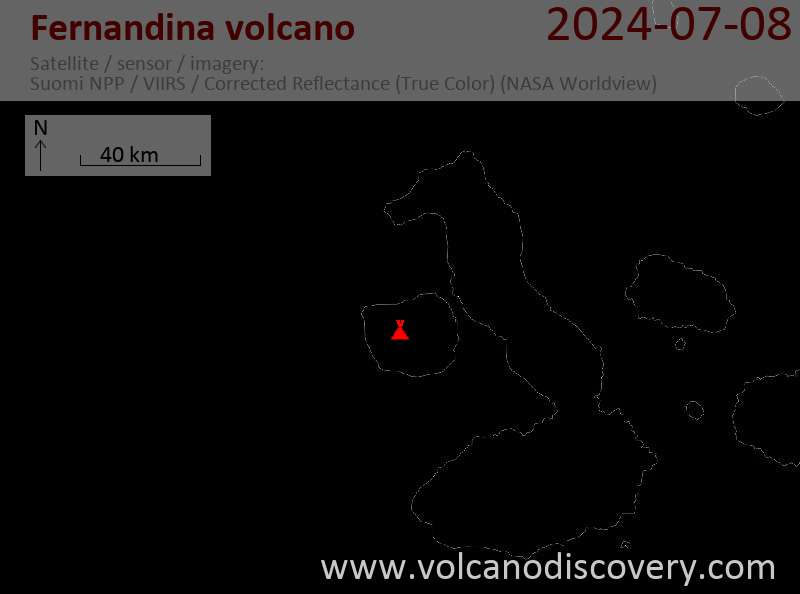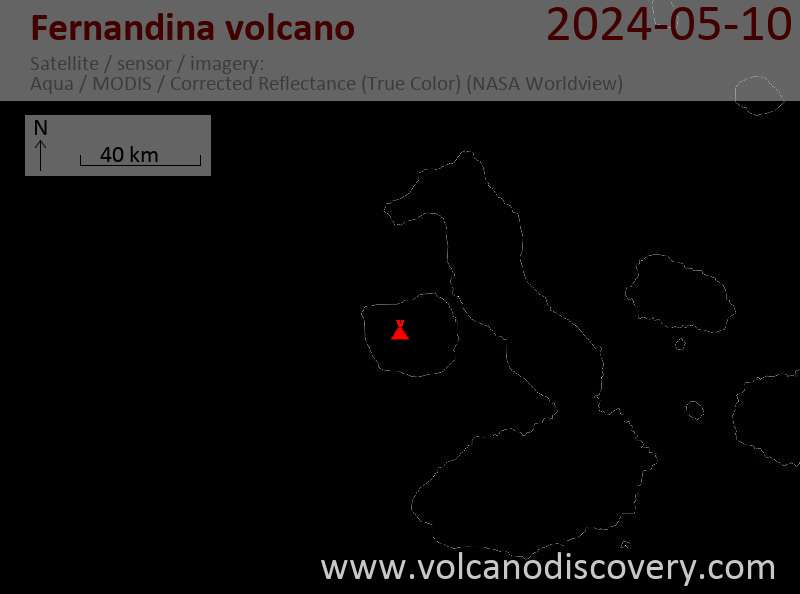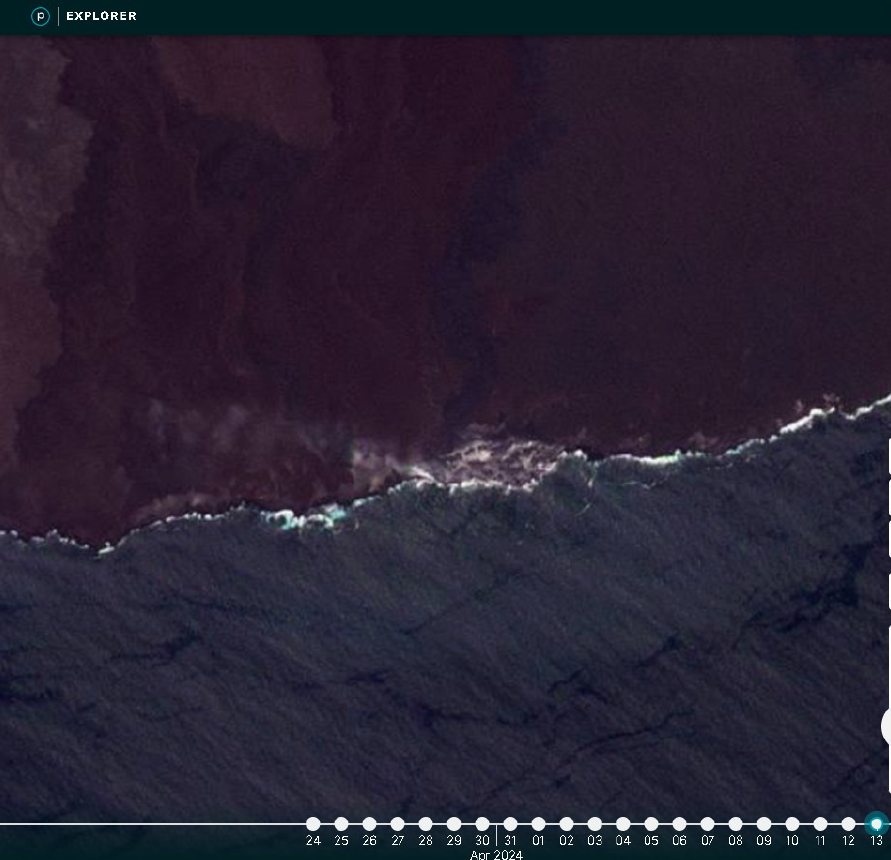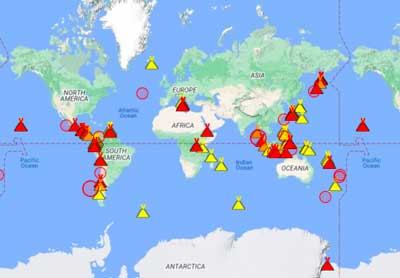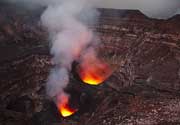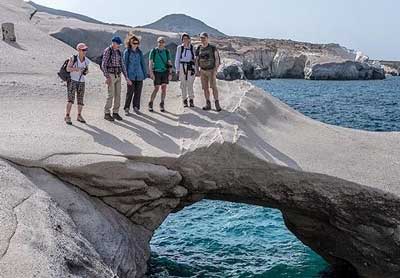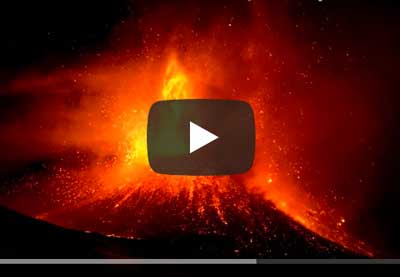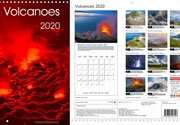Fernandina Volcano
Updated: 18 abr. 2024 03:08 GMT -
Shield volcano 1476 m / 4,842 ft
Galápagos Islands, Ecuador, -0.37°S / -91.55°W
Current status: erupting (4 out of 5)
Galápagos Islands, Ecuador, -0.37°S / -91.55°W
Current status: erupting (4 out of 5)
Last update: 15 abr 2024 (progression lava flow has diminished)
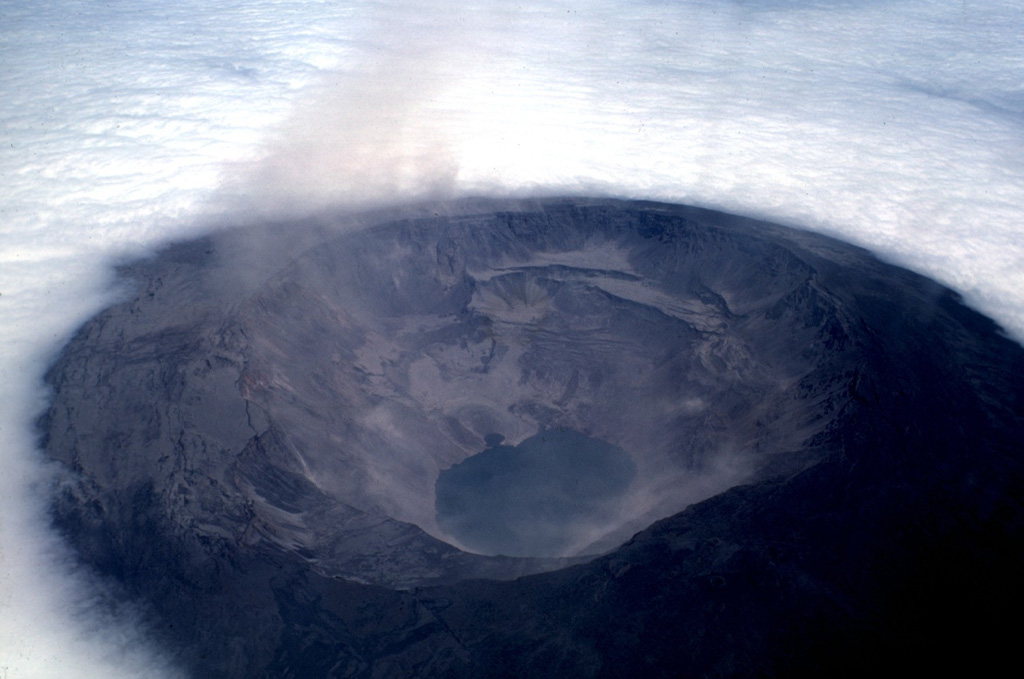
The Fernandina caldera seen on July 4, 1968, about three weeks after a major explosive eruption that was followed by collapse of the caldera floor. Collapse occurred incrementally and asymmetrically, ranging up to about 350 m at the SE end of the caldera, which contains the caldera lake. Photo by Tom Simkin, 1968 (Smithsonian Institution).
[smaller] [larger]
Erupciones del volcán Fernandina: 2020, 2018, 2017, 2009
Latest nearby earthquakes
| Fecha / Hora | Revista / Prof. | Distancia / Ubicación | |||
Background
Fernandina, the most active of Galápagos volcanoes and the one closest to the Galápagos mantle plume, is a basaltic shield volcano with a deep 5 x 6.5 km summit caldera. The volcano displays the classic "overturned soup bowl" profile of Galápagos shield volcanoes. Its caldera is elongated in a NW-SE direction and formed during several episodes of collapse. Circumferential fissures surround the caldera and were instrumental in growth of the volcano.Reporting has been poor in this uninhabited western end of the archipelago, and even a 1981 eruption was not witnessed at the time. In 1968 the caldera floor dropped 350 m following a major explosive eruption. Subsequent eruptions, mostly from vents located on or near the caldera boundary faults, have produced lava flows inside the caldera as well as those in 1995 that reached the coast from a SW-flank vent. Collapse of a nearly 1 cu km section of the east caldera wall during an eruption in 1988 produced a debris-avalanche deposit that covered much of the caldera floor and absorbed the caldera lake.
---
Source: Smithsonian / GVP volcano information





